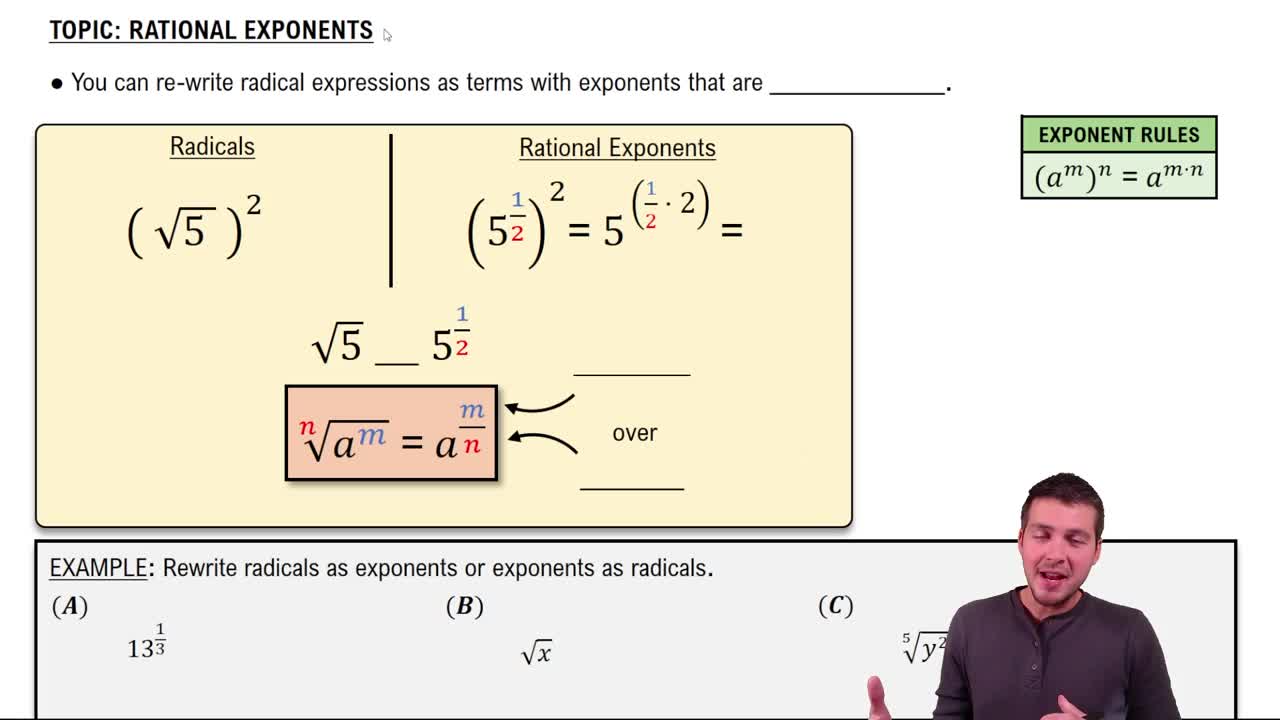Here are the essential concepts you must grasp in order to answer the question correctly.
Square Roots
A square root of a number is a value that, when multiplied by itself, gives the original number. For example, the square root of 100 is 10, since 10 × 10 = 100. In algebra, understanding how to simplify square roots, especially with variables, is crucial for solving expressions effectively.
Recommended video:
Imaginary Roots with the Square Root Property
Properties of Exponents
Exponents represent repeated multiplication of a base number. The property of exponents states that x^a * x^b = x^(a+b) and x^a / x^b = x^(a-b). When simplifying expressions involving variables raised to powers, it is essential to apply these properties correctly to combine or reduce terms.
Recommended video:
Simplifying Radical Expressions
Simplifying radical expressions involves reducing the expression to its simplest form, which often includes factoring out perfect squares from under the radical. For instance, √(x^6) simplifies to x^3, as x^3 * x^3 = x^6. This process is vital for making expressions easier to work with in algebra.
Recommended video:
Radical Expressions with Fractions
 Verified step by step guidance
Verified step by step guidance Verified Solution
Verified Solution

